|
Fountains never fail to entice wonder and excitement among people. The sight of water sprouting and dancing is simply amazing for all ages, especially kids and the kids-at-heart. The earliest appearance of fountains may be traced back to around 3000 BC where Egyptian tomb paintings show enclosed home gardens with fountains. Traditional Persian carpet designs depict formal walled gardens with irrigated pools and canals depicting those found in the highlands of Mesopotamia where Persians and Assyrians enjoy fountains. The Romans, whose waterworks were quite advanced for their time, also enjoyed gardens and public baths that had fountains installed on them. The Eastern world is not to be left out in the spectacle of fountains. The Moorish forces that conquered Spain around the 14th century were known to have installed pools and fountains with lively-colored tilework in gardens such as those in Cordoba and Toledo, as well as in Granada. Indians, on the other hand, built gardens of great splendor with fountains as prominent features. Prime examples include the world-renowned Taj Mahal and the Shalimar Gardens. Chinese palaces, temples and houses also had great gardens with pools and fountains of varying sizes. Beijing's Imperial City features artificial lakes and other impressive waterworks. Kyoto is also famous for its gardens with carefully crafted pools and waterfalls designed by Zen monks. Monasteries in middle-age Europe featured large gardens with fountains and wells. designed to enhance meditation in addition to several rows of herbs, fruits, flowers, and vegetables. Palaces and villas in renaissance Italy were very reminiscent of the grandeur of ancient Rome. 15th century palaces were decorated with gardens such as those of Palmieri, La Pietra, and Medici. The villas in Bagnaia, Caprarola, Rome, and Tivoli also featured fountains that were elegantly elaborate. As the baroque period approaches, designs become more grandiose and complex. Spouting fountains and waterfalls were used extensively to enhance serpentine lines. French chateaus in the Loire valley also had extensive gardens and parks with great fountains for everyone to enjoy. By the 17th century, the prime of French design and architecture, fountains and gardens became endlessly grand embellishing the grand estates such as those in Versailles. The rise of romanticism in the 18th century led to the unleashing of passion which was well translated into architecture, including fountain designs. Exotic and picturesque fountains and ponds served as punctuation marks to the profound statements shown through architecture in this period. Some years after, a prominent landmark, Central Park in New York, spouted. In contemporary times, the magnificence of fountains has been integrated into homes of the common people. A lot of gardens, especially in the sunny states such as California, have falls and fountains as their focal points. Even condominiums and small apartments have incorporated the natural ambience provided by fountains with miniature versions of the outdoor waterworks. Malls and office buildings now also have indoor fountains installed which helps bring about a sense of calmness in such a bustling setting, serving the same purpose as those of the oases in the ancient times. Fountains can prove to be great investments in any landscape or garden. Their ability to instill peace and tranquility is what many people find in this hectic age. One need not install elaborate fountains to enjoy the calming quality of water as there are many available fountains everywhere.
Bristol Gardening is always available to provide you with support in making the best out of your happy place. Call us now for a free quote.
2 Comments
Think about garden and patio decorations just as you would if you were designing a room in your home. We always hear of interior decorating, so now think about exterior decorating! A well-decorated patio can have sitting areas, dining areas, and center pieces. Because you're outdoors, garden and patio decorations let you become creative in really fun ways. The garden decor you select will give your outdoor "rooms" style and character... so go with what appeals to you. Are you formal and elegant, or informal and casual? Whatever approach you take, keep in mind that too many garden and patio decorations will give you a crowded look. Plants and flowers should play just as big a role in your decor as structures and furnishings... let them compliment each other. Visualize Key Furnishings First, envision your patio, deck or garden area. Plan out a few different layouts for the main, larger decor items that will need to fit within your space. These would be chairs, benches, tables, grilling or cooking stations. If you work at home, you can even design an outdoor "work station" for your laptop and office work. Weather-proofed wicker, wrought iron, cedar and teak garden furniture are excellent choices for patio and garden furnishings. Functionality is important, but go for comfort and style, too! There are some great designs for outdoor patio furniture, guaranteed to fit your personal style. Make sure what you buy is very durable and weatherproof, since your furniture will be exposed to sun, wind and rain. Be patient and shop for the most attractive furniture that meets these standards and you'll save money in the end. Outdoor Lighting Sets the Mood Once you identify your main furniture pieces, add even more atmosphere to your garden and patio with outdoor lighting. Lighting arrangements can change the entire feel of your outdoor area. You can go for festive, subdued, ornamental, warm, or bright! Outdoor patio lights are made to endure all the elements, and feature insulated and weather-resistant components. There are quite a few styles you can choose from. The possibilities include freestanding lamps, table lamps, shaded and globe lamps, lanterns, umbrella lights, BBQ lights, string lights, and ground lights. Shop around for what appeals to you, as well as what's practical for your purpose. Choose Your Accents There are no rules for garden and patio decorations and lots of choices! Here are some great accents that will add life and charm to any yard: Garden Benches: Have you ever noticed a rustic bench placed "just right" in a garden? It's a very inviting sight. It doesn't need to be fancy just a spot to sit down and relax. Decorative Planters: To create a pleasing focal point, set out a few planters filled with beautiful flowers in different areas of your garden. You can move them around, and replant them with different flowers as the season goes by. These are perfect for the patio, too. Don't forget, an old container you have lying around can easily be tuned into a planter ñ perhaps an old watering can or a pickle barrel. All they need is some form of drainage. Try one or two planters and see the difference they make! Garden Fountains: Fountains add a great deal of atmosphere to any garden setting. The varieties range from grand fountains made of stone or bronze, to modest and charming garden fountain kits. Garden fountains have such a pleasant, tranquil sound that their beautiful effect is immediate and captivating. Garden Sculptures: Garden statuary is usually made of bronze, marble, stone, wood, or resin. Choose themes from cherubs and saints to deer, rabbits and frogs. Garden sculptures can really develop your garden theme, and are great fun to design with! Tuck them into a corner, or display them openly as a main focal point. Sundials: This ancient device has brought beauty and charm to thousands of gardens. Sundials are terrific accent pieces and come in different designs, such as tabletop and pedestal. Some sundials double as birdbaths! Garden and patio decorations can be as elaborate or quaint as you wish. Simply keep in mind that it's just like fixing up a room in your home. If you like what you see, you've added your own personal signature to your outdoor living place!
The Bristol Gardening Team is always available to provide you with support in making the best out of your happy place. Call us now for a free quote.  Growing vegetables in your garden can save you money. During harvest time, your own produce becomes part of your meals. Home gardeners feel deep satisfaction in preparing salads or seasoning the casserole with freshly picked plants from their own vegetable gardens. Their taste is incomparable. Fresh surpluses are distributed to friends and loved ones while some are kept frozen. It doesn't require much space to grow vegetables. Even a container pot or a window box will do the trick. Where space is limited, you can grow a mini-garden indoor or outdoor. If you have good sun, access to water and enough containers, growing a garden's worth of fruits and vegetables in a limited space is a no-brainer. You can even harvest more than one crop if your choice of plants and planting schemes are all well planned and executed. Windowsills, balconies and doorstep areas can be used, as well as empty packs of milk, pails, plastic buckets and cans. When planting in containers, proper spacing is very important. One sturdy plant is better than several weak ones. Crowding chokes root systems, can slow growth, cause poor production and frustrate your expectations. With container vegetable garden, you no longer need to worry about poor soil types and bad drainage, or heavy-duty tillers to break up hard clay and rocks. There is no weeding to worry about and you can change the looks of your container placements by simply moving them around anytime to a place you wanted to. Vegetable gardening offers a change from the monotony of the supermarket. You can grow a variety of vegetables that you want. When choosing plants for your vegetable container garden, consider container worthy crops such as beans, carrots, cucumbers, peppers, tomatoes, eggplants and radish. Other root crops such onions and turnips can also do well in containers, but remember to always take care of these crops with ample fertilizers and water. Also consider grapes and berries. Though some take a while to get established, they bear fruits more each year. Planting for fall crops can start in early summer, though summer planting can still be done in June in most regions. One great advantage of growing vegetables and spices in containers involves the advent of upside-down gardening. Crops with the likes of tomatoes, basil, parsley, rosemary and peppers do well with this approach. The idea is that the vines will cascade downward instead of raising a stake. A grow box can be treated by punching perforations through the bottom of a container. The other option is to purchase a device specially designed for this purpose. Upside gardens do not require a great deal of space and are perfect for balconies and patios. Equally important, seeds and soil must properly be taken care of in your vegetable container garden. Seeds do not always have to be bought. Reasonably fresh dill, anise, fennel, coriander and other seeds already on the spice rack should grow. If not, they are too old to add much to food anyway and should be replaced. Scoop out seeds from vegetables you've bought and dry them a week or so before planting. Soil preparation, on the other hand, is very crucial for good results. Have the soil tested. Every city has a land-grant college that will test soil for a small fee. It will give abundant basic gardening advice and garden resources tips. Start growing those veggies in your garden and turn your home made meals into something truly special. Take care of your plants to make them productive by keeping them watered and harvested.
The most important components in a landscape are probably trees. Their prominent shape and size gives the necessary depth to any garden or lawn. Such a large and tall plant can be impossible to ignore in any scenery and they can add a sense of permanence with their remarkable longevity, making it possible for them to be enjoyed through generations. Additionally, trees attract life as they have the ability to support whole ecosystems being a possible home to birds, bees, butterflies, squirrels, small plants, and other creatures. Moreover, trees can also become aesthetic, flowering trees can add beauty and grace apart from a sense of strength and prominence. There are many kinds of flowering trees, each being valued for their distinct qualities. Here are some of the most popular in the landscaping scene:  Dogwoods are among the most popular and well-loved flowering trees that blossom in the spring. The soft white or pink flowers are indeed pleasing to the eyes. Additionally, dogwoods also look good in the autumn as their leaves turn to a rich and bright red tinge. Having a dogwood in one's backyard can definitely light up the surroundings for much of the year.  Rose of Sharon is technically a shrub, most people think that it is a tree because it can grow tall and be trimmed down to a single tree-like trunk. Its lilac-tinted flower is very attractive. The blooms come relatively late which makes it good to be planted with early blooming trees to enjoy flowers throughout the season.
 Washington Hawthorn Flowering Trees are very much valued because of the distinct time when they bloom. They usually flower from the latter portion of the spring to the early part of summer which makes them ideal in the transition period between the two seasons, when most spring trees have shed their blooms and most summer trees have just started budding.  Magnolias are sometimes called saucers obviously for their big flowers that are very noticeable to anyone nearby. This type of flowering tree makes a big impression on anyone who beholds its beauty.  Crape Myrtles are considered the queen of the flowering trees as it is a very popular choice. They bloom for long periods starting from the middle of summer to autumn. The flowers bloom in clusters that can be white, red, pink or lilac, which are attached to the tips of new wood. In temperate regions, these flowering trees can die in the winter, but come back in springtime. 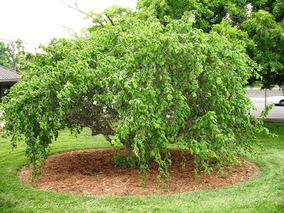 Harry Lauder's Walking Stick is a unique tree with an odd name. It is indeed a distinct flowering tree as it becomes beautiful only when it sheds its leaves. It is also technically a shrub that looks like a tree because it can go over four feet high. Harry Lauder's Walking Stick is ideal for those with winter planting in mind. There are several other kinds of flowering trees and each could add beauty as well as strength to any landscape. Planting trees can be such a worthwhile endeavor to beautify any piece of land.
The Bristol Gardening Team is always available to provide you with support in making the best out of your happy place. Call us now for a free quote. You may just have doubts of whether the plant will eventually grow or not. Also some plants require additional heat, water and humidity which may be difficult to provide. So here, we make gardening simple and easy for you. Here are the top easy to grow plants which will ensure success without fail!  Mint This is one of the easiest herbs to grow. Mint plants will grow rapidly and even spread to neighboring patches of your garden if you are not careful enough. Hence, a good approach is to grow mint in a container. The good thing is that this plant needs hardly any maintenance and care. You can take a fresh sprig of mint and can grow it anywhere either in direct sunlight or inside a cool and shady place. You only need to make sure to water the mint plant thoroughly everyday till you see the seedling leaves appear.  Tomatoes Tomatoes are so easy to grow that it is almost ridiculous! All you need to do is take a handful of tomato seeds from a tomato which you have already cut. Then make sure to wash the seeds from all the tomato juice that is clinging to them. Otherwise the seeds will be coated with sugar which can cause a fungal attack. Then place the seeds around a quarter inch from the soil top. You should begin to see shoots appear after around a week or so. Once the seedling leaves appear, place them in direct sunlight for three hours every day till the leaves are grown. Then transplant the seedling into a pot.  Sweet peas These cute looking green peas are often used in germination experiments in schools because they grow so easily. You could even place peas in a moist wad of cotton in a bowl. Then keep the bowl in a shaded area and watch the seeds sprout in a few days’ time. You can transplant the seedling once you see the secondary leaves appear on the shoot. 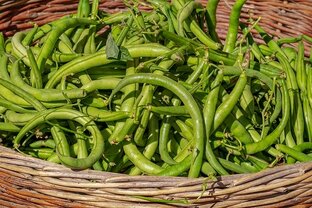 Beans Beans are another great option if you wish to ensure fast gardening. Simply place a couple of beans inside a seedling pot. Then water them regularly and keep the pot in a shaded area. Once the shots emerge, place the seedlings in direct sunlight for a few hours daily until they toughen up to face constant sunlight.  Ginger Did you know that you could cultivate ginger by just cutting off a portion of the ‘eye’? The surface of the ginger root has several small projections on it. In order to successfully grow the plant you need to cut off this portion and place it under the soil. It will breed marvelously. Slowly, it will grow its roots into the soil and then the shoots and leaves will appear.  Lemons You can easily grow a lemon tree from existing lemon seeds. Just take out the seeds making sure none of them have been dehydrated or damaged by cutting. Then wash off the seed surface from all sugar residues. Then plant the seeds into the soil. You will need to place the seeds a little towards the bottom of the soil. Then you can expect to see seedling plants emerge. The good thing is that each seed will yield multiple seedlings.  Nasturtiums These are vine shaped plants which have leaves that look like lily pads. The great thing about this plant is that it comes in vibrant colors like vanilla, yellow, crimson and orange. These flowers are not edible and once you have planted them, they will regenerate with every season.  Cosmos This plant is typically found in old fashioned garden patches. You will find these plants in two varieties – sonata mix and seashells. Growing the plant from the seed is always better than just placing a seedling into the pot as the plant emerges stronger with better yield. The Cosmos plant is fantastic at regenerating itself time and again!  Sunflowers These beautiful flowers can be grown from the seed itself. These flowers will be tall, bright colored and always facing the sun! You need to have ample space to grow sunflowers as the flowers grow as high as a corn crop!  Ornamental grass This is a type of grass which grows out very quickly. Besides, its soft and velvet-like appearance makes for a nice decorative patch in the garden or near your balcony. You can easily anticipate regeneration in the next season.  Arugula This lettuce variety is nut-flavored and is mostly found in high-end salads. Hence, it would do you good to plant them to make your salads! You need to plant the Arugula inside a pot and place it in your kitchen where it is less sunny. The great thing about growing plants at home is that they are more economical and organic. Therefore there are no chemicals making for a healthier, tastier meal!
The Bristol Gardening Team is always available to provide you with support in making the best out of your happy place. Call us now for a free quote. With just a little bit of planning, you can have beautiful butterflies and hummingbirds flocking to your garden. That's good news for gardeners because not only are these winged creatures fun to watch, they're essential pollinators. The key is to know what hummingbirds and butterflies look for, which are flowers with nectar. So when you select nectar-rich plants for your garden, look for varieties that are both prolific bloomers and have a long bloom time. Prune your plants to prevent excessive woody growth and encourage the growth of new flowers. Hummingbirds are attracted to bright orange, red and hot pink blossoms. Their long, narrow beaks can reach the nectar of long, tubular flowers such as the Balboa Sunset Trumpet Vine with its large scarlet blossoms, and the Goldflame Honeysuckle, which has vibrant yellow and red flowers. Other good choices include the Super Red Flowering Maple and the Navajo series of Salvia, available in many colors, including bright red, rose and salmon red. Not all hummingbirds feed at the same height, so plant an array of shrub sizes and climbing vines for food sources. Butterflies are attracted to yellow, orange and red. They too are seeking nectar, but their mouths, or proboscises, are much smaller, so they prefer flatter flowers they can perch on while they feed. The no-fail plant for butterflies is the Butterfly Bush, or Buddleja. However, since they can get too large for some gardens, consider the Petite series of Dwarf Butterfly Bushes. Petite Indigo has a profusion of lilac-blue flowers; Petite Plum sports reddish-purple blooms and Petite Snow has pure white blossoms. Lilacs are favorites of butterflies, but don't typically flower well in climates with warmer winters. Blue Skies Lilac produces huge clusters of light lavender-blue flowers that don't require winter chilling. Butterflies love coneflowers, such as the bright pink Pixie Meadowbrite. Asters are great because they bloom well into fall. The new Farmington Aster has a profusion of lilac bloom clusters that butterflies flock to. Supply a source of water. Hummingbirds enjoy flying through a fine mist, which cools them off. Butterflies like drinking from shallow puddles. Position some large flat rocks in a sunny spot, on which butterflies can sun themselves to warm their wings. The Bristol Gardening Team is always available to provide you with support in making the best out of your happy place. Call us now for a free quote.
 For container gardening ideas, search the internet, the library or a bookstore. The challenge is to come up with a pleasing container garden design. There are an unlimited variety of containers available for your container garden. These range in size from small house-plant pots to large boxes and planters. Equally variable are the materials from which they are made. These include wood, glass, clay, aluminum, bamboo, straw, plastic, fiberglass, terra cotta, tin, cast iron, zinc, copper, and brass, each with certain advantages and disadvantages. What you select will depend on availability, cost, background, and appeal, not to mention the characteristics of the gardening pots. 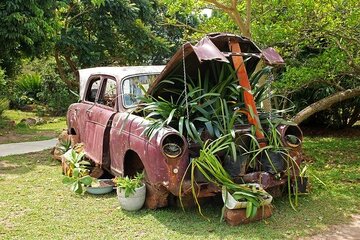 Here are some container gardening ideas. In addition to traditional circular pots and tubs, there are modern and ultra-modern formsósquare, rectangular, triangular, hexagonal, and octagonal. Also eligible are old iron kitchen pots, kettles, pails, jugs, casks, vases, crocks, jelly tubs, barrels and nail kegs, Japanese fish tubs, old sinks, bathtubs, bamboo soy tubs. There are novelty containers such as driftwood, wheelbarrows, donkey carts, spinning wheels and boxes attached to roadside mail receptacles. There are also bird cages, decorative well heads, animal figures, and Strawberry jars. Woven baskets may be used to conceal unattractive containers. Even tar paper pots, handled by garden centers and florists, are worthwhile if painted or covered to improve their appearance. Any of these can be used in your container gardening ideas.  Where to find your container supplies? Start with what you have. If you scout cellars or basements, attics, garages, and sheds, you will doubtless encounter something interesting. Old-fashioned pots and kettles, often sold in antique shops at country auctions or seen at old New England inns, have much appeal. Other container garden ideas are to consider old cookie and bean jars, pickle and other types of crocks, wash tubs, coal pails, jardiniéres, and ceramic bowls. For drainage, spread a thick layer of large pebbles or broken pieces of pots or bricks at the bottom and then water plants with care. In large containers of this kind, drainage material should be several inches thick. Where rainfall is heavy, be sure to keep garden containers without drainage outlets on porches, under awnings or the broad eaves of houses. With pails and old galvanized wash tubs, holes can be easily punctured at the bottom. Plants in containers without drainage openings remain moist longer. Some of these crocks, jardiniéres and cookie jars are heavy enough to be secure against wind in outside container gardening.  What constitutes the ideal container for your container garden ideas? A container must be attractive, even if it is not an object of art. It should be strong and durable and able to resist all kinds of weather. This is especially true of large sizes, which usually remain outdoors all year round. In the North, alternate freezing and thawing is a problem in winter (and could cause cracking); in tropical climates, excessive heat, humidity, and moisture are to be considered (and could cause fading). And in semiarid areas, there is the effect of scorching sun to keep in mind, another cause of fading. All these things must be kept in mind when coming up with your container gardening design.  The ideal container must be large enough to hold a substantial amount of soil. It should have good drainage facilities through holes or other openings at the bottom or sides, though this is not absolutely necessary. It must not rust, at least in a single season, and it should have a wide enough base to rest firmly wherever placed. Besides, it ought to be heavy enough to withstand average winds. In severe storms like hurricanes and tornadoes, movable containers can be shifted to temporary safety. All of these things should be factored in when you are coming up with your container gardening ideas.  Resistance to rot is another requirement. Wooden containers - except those made of rot-resistant redwood, Western cedar, and Southern red cypress - will need to be treated with a wood preservative. Except for permanent containers, the ability to move your container garden is another feature, and sometimes a safety precaution, of portable container gardening. Large boxes and planters can be fitted with wheels, and garden centers have redwood tubs that rest on platforms with wheels. A hole in the platform corresponds to the hole in the tub. Large containers without wheels can be pushed on iron or wooden rollers by two or more persons; however, if you live in an area prone to disastrous storms it is best to keep your containers small. Smaller containers are ideal for growing herb container gardens. If you plan to plant an herb container garden be imaginative Here are some container garden ideas for herbs that will go well together.
So these are just a few container gardening ideas. Get out a pad of paper and make up a container garden design that will please the eye and maybe even the palate
Happy Container Gardening! The Bristol Gardening Team is always available to provide you with support in making the best out of your happy place. Call us now for a free quote. A lot of money is spent on this to reproduce fragrances for perfumes and air fresheners. The majority of these manufactured fragrances have alcohol and other additives that can irritate the membranes in your nose. Nature has done it the best and these are some of the most heavenly fragrances you’ll ever smell.
Whether you have them planted outdoors or in a pot in your home, this beautiful flower will brighten up any space and give off a constant heavenly fragrance, but it is not overpowering. We just can’t imagine a perfume that smells any better than this. And men, instead of giving her some fresh cut flowers, try giving her a hyacinth plant. It will last longer and she can replant it again next year if she wants to put it in a garden.
They don't do well in direct sunlight or drafts so place them in a more diffused lit area. If you replace the water every couple of days and add flower food plus a new snip of the ends, you’ll have a long lasting, beautiful fragrant arrangement.
You can order any of these flowers from Bristol Gardening. If they don’t have them on hand you can ask them to order some for you. In most cases, if you place an order before noon, you should be able to pick them up later in the afternoon.
Rather than putting chemicals in the air, you may want to get some flowers now and again and enjoy nature’s perfume. Enjoy! The Bristol Gardening Team is always available to provide you with support in making the best out of your happy place. Call us now for a free quote. Unsure how to start gardening? Worried that it will take up too much time or money? Let us help you with easy to understand tips and advice. This article will show you how to beat the weeds!
So there you have it! Once your ground cover plants are established, you'll no longer have to spend hours on your knees, but can spend quality time in your garden.
The Bristol Gardening Team is always available to provide you with support in making the best out of your happy place. Call us now for a free quote. If you’re lucky enough to have a lawn with a good topsoil base, much of the hard work of keeping a lawn beautiful is already done for you. But many of us do not have this luxury, and besides, even with a good topsoil base, you still have to work hard to keep a beautiful lawn and garden.
The Bristol Gardening Team is always available to provide you with support in making the best out of your happy place. Call us now for a free quote.
|
BlogTips & Tricks from our experts to keep your garden in great shape! Archives
May 2022
Categories
All
|
Bristol Gardening
0117 325 5970
0117 325 5970
In association with:




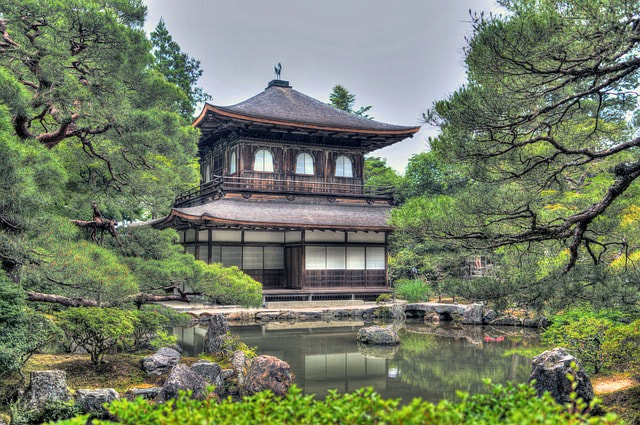



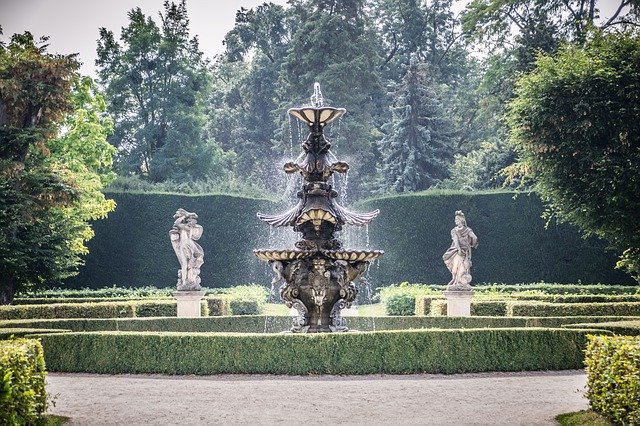

















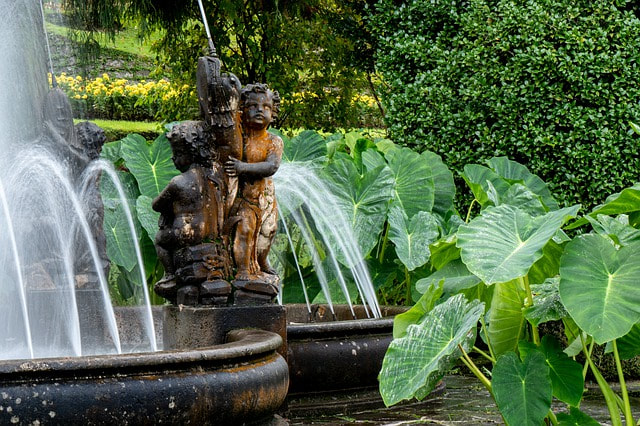








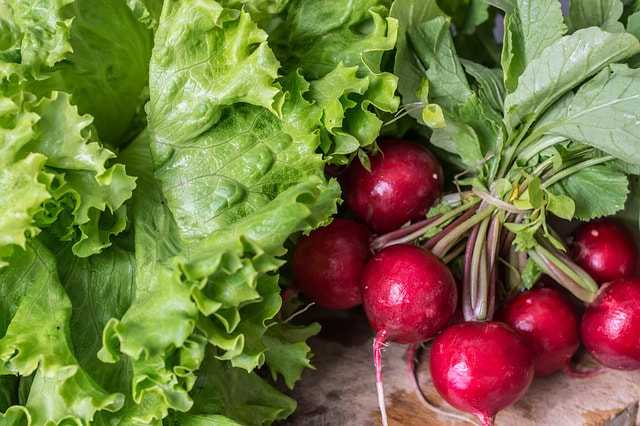




















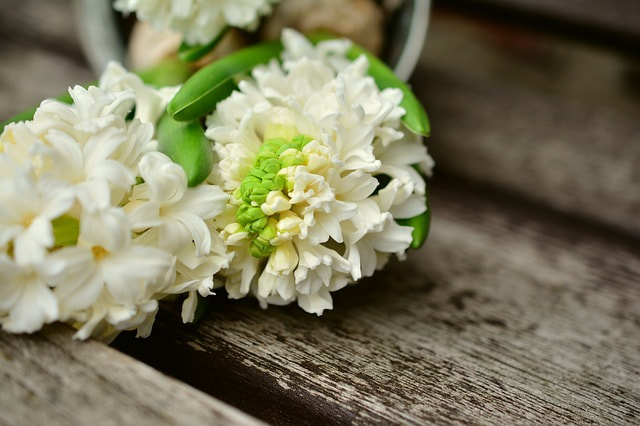





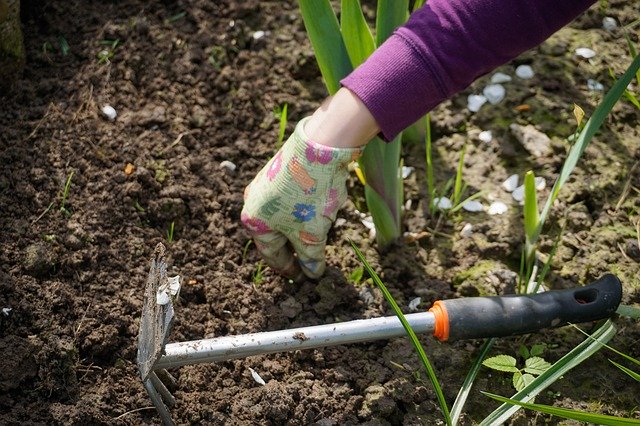


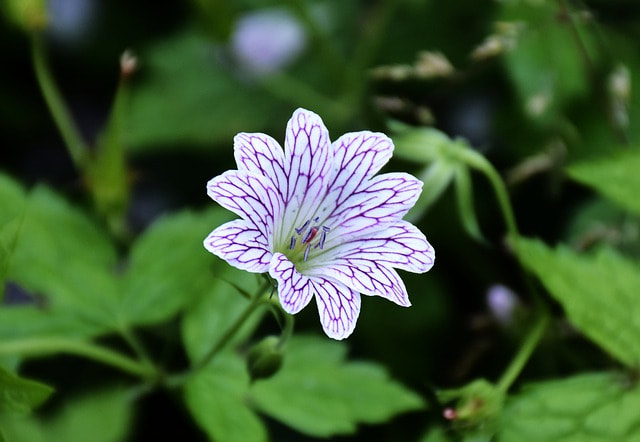







 RSS Feed
RSS Feed

